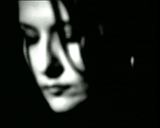
 Author of all texts
about mythology on
these web-pages is
Lidija Bajuk:
Author of all texts
about mythology on
these web-pages is
Lidija Bajuk:
|
lidija.bajuk@posluh.hr
scena.hgu.hr/lidija-bajuk/
- The Sky
- The Mountain
2. PERUNIKA
- Leluya
- Ball lightning
3. AQUARIUS
- Candlemen
WATER MAID
- Fairies
- Witches
4. DRAGON
- Water
SNAKE
- Bogorodica
(Rainbow)
5. GREEN GEORGE
- The Moon
- Corn Spirit
6. LEPA MARA
- Hair
- Embroidery
7. GRABANCIJAŠ
- Light
8. PESJANEK
- Forest
9. LITTLE RED HAT
(DWARF)
- The Cap, Little Hat
10. STRAHE & MRAKI
(GIANTS)
|
THE MOON
|
|
The dark Moon was often identified with the fallen Sun, Hors, the rulers of the underground (with Tur/Volos/Veles/Velebic/Vlas(in)/Vlasic/Blaise the patron saint of agriculture and farming which are the origins of different geographical names in Croatia like Veles, Velesovo, Velesovac, Velez, Vlasic, Volosko always situated in valleys near water; with Podzemljar (''undergroundman''), Tatomir, Pokol, Paklenjak (''hellman'') - which are the origins of town names in Croatia such as Paklarevo, Paklenik, Paklesnica, Pakliste, Peklenica; with Poklad), with dusk and night (with Prijezd, Crn-bog (''black god''), Mracnjak(''darkman''); there is a saying ''Every cow is dark in the night.'') and with winter (Zim(o)nik-''winterman''), with keepers of treasures (with Oganj (''fireman''), (J)Anje, (J)Anja (''lamb''), Janko (of Budim), Rajko, Bluebeard, Pepelnjak, Zlarin, goldsmith, dwarf), with the demons of evil (Pripegal, Zli-bog (''evil god''), Ljut-bog (''angry god''), Strah (''fear''), Hudic (''bad one''), evil spirit, rage, misery, devil, satan, ghost) with black, green or brown monsters (a winged snake, a dragon (zmaj, ala, azdaja, halva) a black winged horse, a beast, a fire-wolf, a werewolf, a vampire, a doghead, a water-sprite), with strong, superhuman creatures (Zmajan (''dragonman''), Sur, Bas-celik (''bas-steel''), Balacko, Bakonja, the Ironman, the Giant), with foreigners ( Alija (''Moslem''), the Arab, the Gypsy or Moore, the king of Budim, Tucipetar(''Peter that hits''), the Hungarian, the Venetian, the Tatar, the sultan, the pasha, the bey, the aga, the vizier, the black man/duke, Bluebeard). Although they are of divine origin, they are rulers of night and darkness and cause storms, so, as Christianity spread, they lost their good features and became the representatives of discord, heartlessness, envy, trickery, spite, injustice, quarrel, greed, theft, violence and crime, but also the symbols of resurrection (they devour the old man, that is the old Sun in order for the new man to be born). In a Czech novel from the 15th century it is said: ''What devil, what dragon, what ruler of the underground possessed you to rebel against me?'' But, the ones that remain are the guards and safekeepers of the material and spiritual treasure. Only a hero can come freely near it after he overcomes the monster (embodied in himself or in some other creature). That's the reason the spots on the Moon were thought to be the marks of a dragon. In fact it has something to do with the fact that the human imagination tried to give these creatures the form of black threatening clouds which are the principal reasons for darkness (As it is suggested in the saying: ''The night has power.'' and the curse: ''May you be devoured by darkness!''), storms, cold, hunger, disease, poverty, war and death (when it is getting cloudy in Medjimurje people say: ''The weather is growing a beard!'' which refers to Veles' beard, snake's bed of sheep's fleece, actually an alusion to cattle they were guarding). Because they were afraid of them, people had rituals to get them in good spirit, sometimes even sacrificing people. It makes sense then that dwellings of such blood-thirsty and vengeful gods or evil spirits were damp, foggy, dark, deserted, cold, underground, distant and inaccessible places which you could approach only by crossing a silver bridge or the Milky Way (it was for example the roots of a mythical tree, the Lower Chambers, or the Seventh Room of the Ada Castle in the Copper Avenue of the western city of Budim, Constantinople, Boot-city in the middle of Legen/Legjan/Le(dj)an, the moore or wasteland in Goleč, Lelej-mountain or Glass-mountain surrounded by Suton(''dusk''), Mračaj, Mrak(oč), Mrklica (''darkness''), Nevid (''non-see'') in Arabia, Bezdan(''abyss''), Djidjin-land, Hades, India, Paklina/Pakao (''hell''), subconscious, Talia, Tartar, Turkey, Ud(b)ina or Hungary). (According to psychoanalysts, the monster represents the unconscious, unnatural desires that have to be overcome in order for a person to develop to the highest spiritual level.) Illnesses can be caused by all the supernatural forces and the spirits of the dead, especially the ones that are not worshipped (e.g. fairies, Thundermaker, black magicians) or the ones that have in time become completely degenerated (like dragons and witches). Misfortune can be easily passed on from one person to another, especially to children, beautiful, gentle or happy people. That is why it shouldn't be refered to too often, euphemisms should be used and words of praise should be accompanied with magical words against spells, such as: ''Eyes into the stone!'' or ''Eyes into the tree-stump!'' During holidays purifying baths should be organized, magical herbs should be used, ceremonial walks, sways and rollings should take place, strong people's shirts should be worn, bonfires, shoutings, dances and sacrifices should be organized. Beech, henbane, bitter oak, hornbeam, cypress, pear tree, blueberry, water-lily, hazel, walnut, yew-tree and cane are sacred Moon plants. The Moon is also represented by the bull/cow (their horns represent the horned Moon, i.e. the new moon), bumblebee, jackal, raven, adder, lamb (the black lamb represents ''the dead of night'', and it is often identified with the shepherd), goat, stag, dark haired horse/mare (old Slavs predicted the mood of Triglav (''the threeheaded one'') using black horses, a bit different from the white horses of St. Vid; there are famous riddles: ''The grey horse jumped over the sea, not wetting its hoofs'' and ''Our white horse crossed the meadow, nobody knows where it went.''), cuckoo, weasel, bear, mouse, fly, black dog, duck, peacock, fish, owl, scorpio, boar, otter, wolf/she-wolf, rabbit (because it multiplies fast, it is a symbol of the magic of fertility and hunting), snake and frog. In Croatian folk literature it is also represented by human characters - Old Novak (the last quarter) and his son Grujica Novak or Novaković (the new moon), and sometimes Novak Debeljak (''fat one'') (the full moon), Andrijaš, Mihajlo, Gavan (derived from the word ''ogavan'', meaning ''disgusting''), etc. Silver is the Moon's metal of shiny white colour, the colour of wisdom. It is also the colour of water, the same as green which refers to the relation between the guard of the waters and the springs. Here, the symbolism of the silver, shiny white, or pale colour becomes close to the symbolism of the black colour meaning shadow, darkness, night, cold, the North, depth, undreground, chaos, impurity, sterility, nothingness, instinct, unconsciousness, fall, difficulty, sadness, anxiety, renunciation, ignorance, deformity, misery, punishment and death. But black is also the colour of Mother Earth in which, through the colour red, the colour of fire and blood, life is renewed through the symbolism of green (remember the green snake, the dragon with the red muzzle). The mixture of black and white is grey which symbolizes the man. Like black and white, red is understood in two ways - as a day, male colour and as the night, female colour. The latter is found under the green of the vegetation and the blackness of the Earth, so when it is hidden it represents the colour of underground fire, soul, heart, knowledge and wisdom. When it is spilt it is a mark of hatred, lust, cruelty, death and hell (that is why women who had the period were forbidden to touch and the same prohibition refered to hangmen and blacksmiths). Similar to this symbolism is the symbolism of the brown colour of copper (something between red and ochre), as the colours of the underworld. |